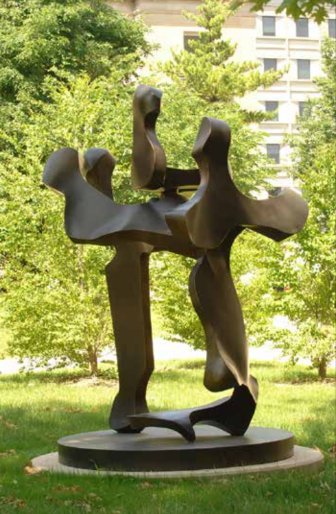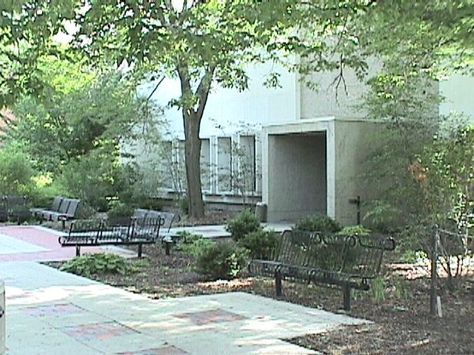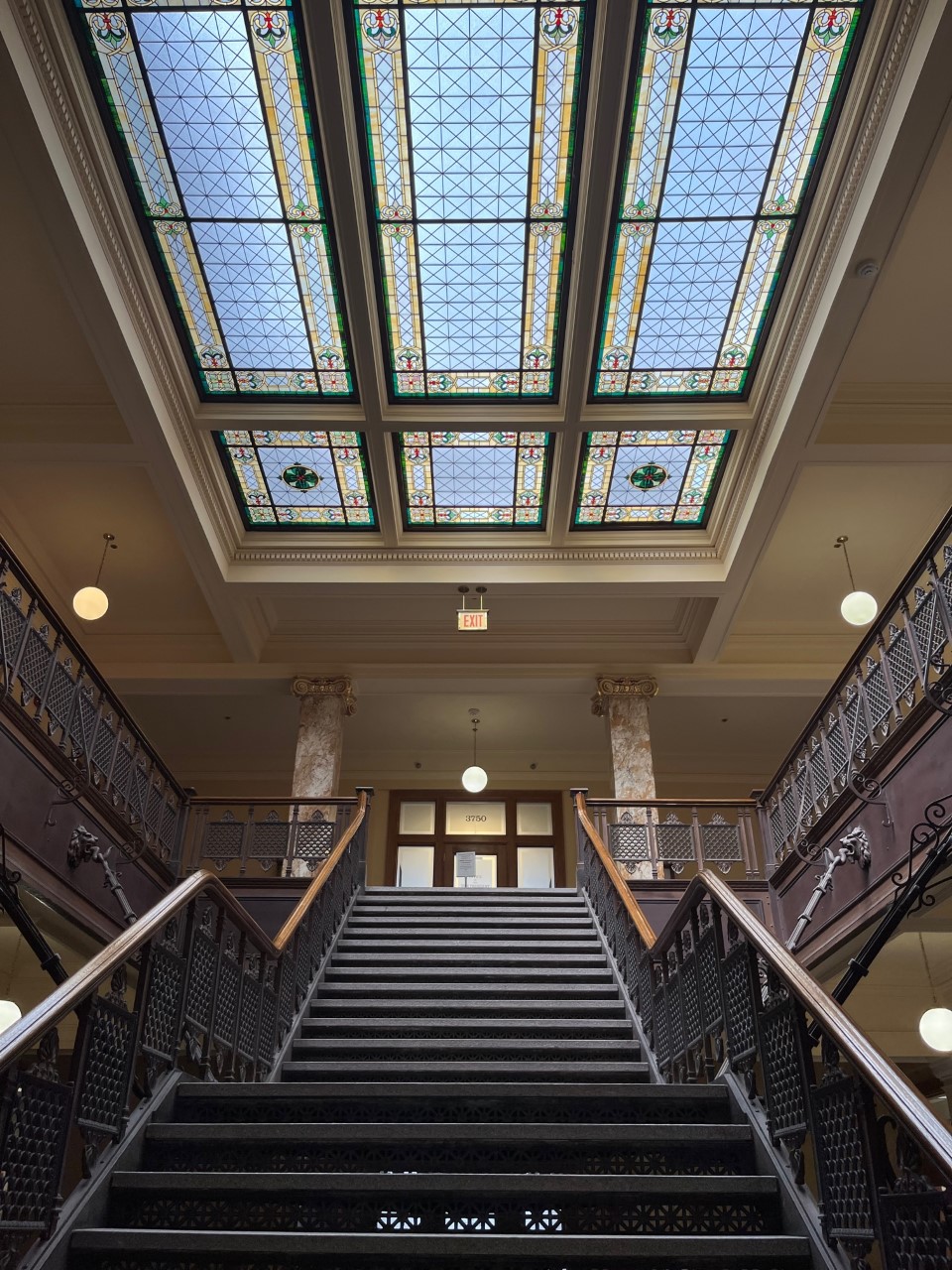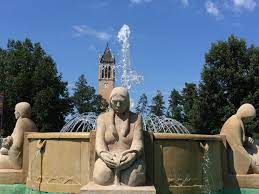Summer - Map and Pause Location Details
Part of the richness of the Strolls for Well-being at ISU is the intentional selection of the pause locations for each season. Locations were selected to include various natural settings and the amazing art that is part of the ISU campus. The following map includes the specific locations along with the history and/or information about the art that you will find at the pause. Download the Summer Stroll map and history.
Now pick a stroll, or a pause, that you would like to explore. Check the history and find it on the map as you set out to enjoy a simple mindfulness practice.

Pause 1: Bravo III (Grace and Balance)
Location: Northwest corner of the Gerdin Business Building
Created by American artist Bill Barrett and added to the ISU collection in 2005, Bravo III belongs to the American modernism style made of bronze. Barret’s sculpture addresses the interplay between positive and negative space with grace, elegance and exquisite balance. Like his other works, Bravo III floats through space, curving upward and outward, flirting with weight and gravity; the sculpture is sensual and intuitive, rather than ruled by an imposed logic. Others have said that Barrett's sculptures are distinctly American in their directness and lightness. His sophisticated constructions, through a delicate balance of form and content, transcend the starker aesthetics of minimalism with a warmth and humanity. Step back and notice that Bravo III resembles the mathematical symbol Pi.
Pause 2: Dairying Fountain (Drinking it in)
Location: Inside the courtyard at Food Sciences Building
This 1934 mural is one of the first pieces Christian Petersen created at Iowa State while serving as sculptor-in-residence from 1934-1955. It was the first sculpture created as part of the federal Public Works of Art Project in Iowa during the Great Depression.
It is made of terracotta, and the left side portrays a 19th century family farm operation while the right side portrays dairy production moving to commercial facilities in the 1930s. The center is comprised of a bull and three Jersey cows drinking from the fountain to give the impression the cows are drinking water from a trough.
In 1986, the Food Sciences Building was expanded, and because the artwork is on the National Park Service’s Registry of Historic Places, it couldn’t be moved so the courtyard was enclosed. In 2013 it was retooled and restored and is a wonderful place to pause.


Pause 3: Border Crossing (A New Life)
Location: Main campus, east of Morrill Hall and south of MacKay Hall.
Border Crossing was added to the campus collection in 1989. It is a totem-like sculpture and is one of Luis Jiménez's signature works of art. The sculpture is of a man crossing the border carrying a woman on his shoulders. The woman holds a crying infant in her arms, sheltering the child. This sculpture commemorates the hundreds of thousands of immigrants who have travelled across the southwestern border from Mexico into the United States in search of a better life. It is a celebration of the immigrant and is dedicated to Jiménez's grandfather who crossed the border illegally with his grandmother and their son– his father.
Border Crossing is typical of Jiménez's other works of art with its larger-than-life figures. These figures are depicted to give the feeling of movement towards a goal and a will to survive, while also apparently fixed in time, exposed and in peril. The sculpture is made of fiberglass, a medium which Jiménez preferred.
Pause 4: Atanasoff/Durham (Shady Pause)
Location: Between Atanasoff Hall and Durham Center.
The space between these two buildings offers a quiet, shady spot on sunny days. John Vincent Atanasoff was a student and faculty member in physics and mathematics at Iowa State and is considered the father of the computer. He and an electrical engineering student, Clifford Berry, developed and improved the first electronic digital computing device– ABC, Atanasoff-Berry Computer from 1937-1942.
The ABC looked nothing like today’s computers; it was the size of a big desk, weighed 750 pounds, and featured rotating drums for memory, glowing vacuum tubes, and a read/write system that recorded numbers by scorching marks on cards. But the machine also was the first to use several innovations that are still a part of today’s computers: a binary system of arithmetic, separate memory and computing functions, regenerative memory, parallel processing, electronic amplifiers as on-off switches, circuits for logical addition and subtraction, clocked control of electronic operations, and a modular design.
President George Bush awarded Atanasoff the National Medal of Technology in 1990.
Pause 5: Beardshear Hall (Glass Gardens)
Location: Inside Beardshear Hall on main campus.
Opened in 1906 as Central Building, it was renamed in 1938 after Iowa State College President William Miller Beardshear. This building is a prominent campus landmark constructed on the site of Old Main after it was destroyed by fire. It has housed the office of the President, Vice President, and other executive offices since it was built.
A complete restoration of the building was undertaken to return it to the original 1906 look in 2002. Using historical pictures, and after removing layers of paint, the original paint colors were identified. In order to restore the stained glass skylights, a family that had purchased several of the stain glass panels in 1961 (removed due to water damage) provided these panels for the restoration project. The north and south skylights each contain 7,200 individually cut sections of stained glass, traced and transferred, leaded and custom fit. Be sure to look up next time you are in Beardshear. Notice the fresh paint in chocolate browns, soft yellows and ivory and the beautiful stained glass skylights. It's a view that hasn't been seen in over a hundred years.
Pause 6: Fountain of the Four Seasons (Circle of Life)
Location: Outside of the north entrance to the Memorial Union.
The Fountain of the Four Seasons sculpture was created in 1941 by Christian Petersen while he was the artist in resident at ISU. The fountain was removed for two years to be restored and was reinstalled in 1998. Inspired by the Osage chant of thanksgiving and placed around a fountain, the four seated Native American women face north, south, east, and west, each demonstrating a line of the prayer and the seasonality of the year. The first woman is planting the seed, "Lo, I come to the tender planting." The second bends close to the earth, "Lo, a tender shoot breaks forth." The third holds a harvest basket of maize, "Lo, I collect the golden harvest." The fourth nurses her newborn baby, "Lo, there is joy in my house." Originally born in Denmark in 1885, Christian Petersen eventually emigrated to America to study art and spent 21 years at ISU.


